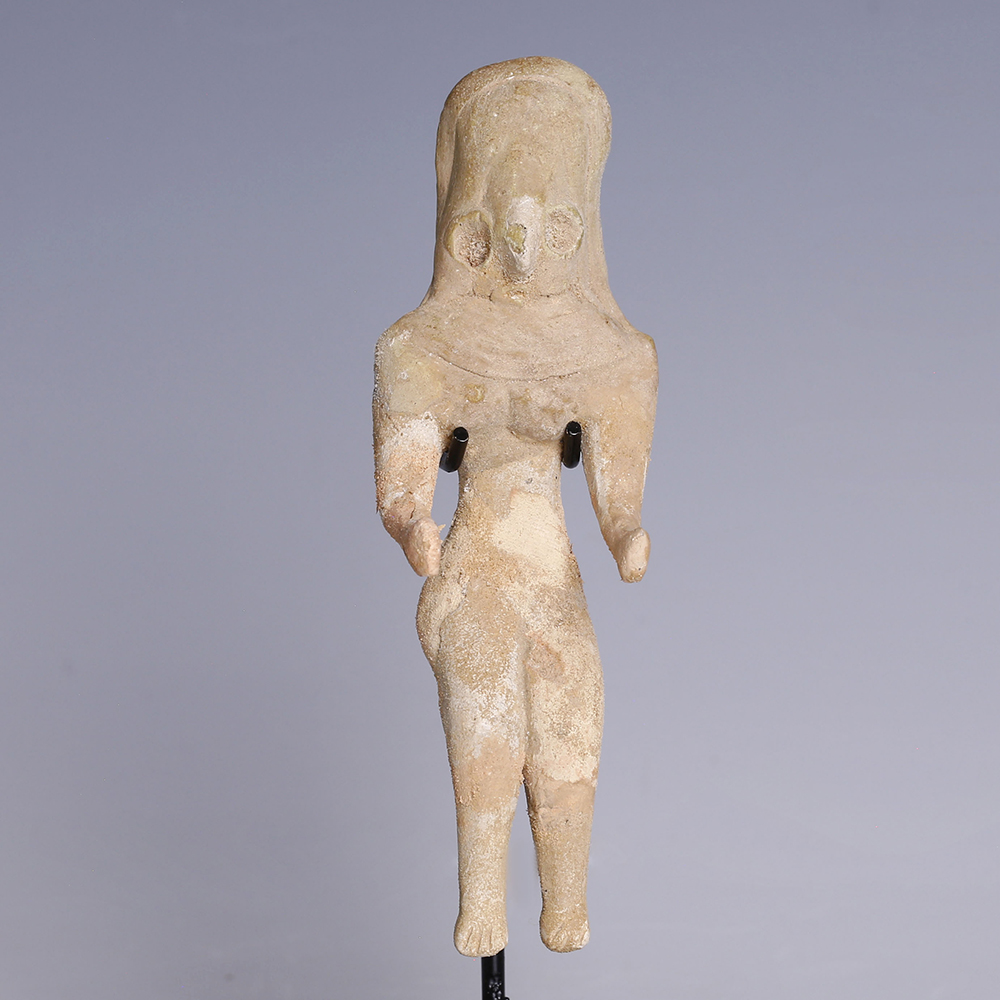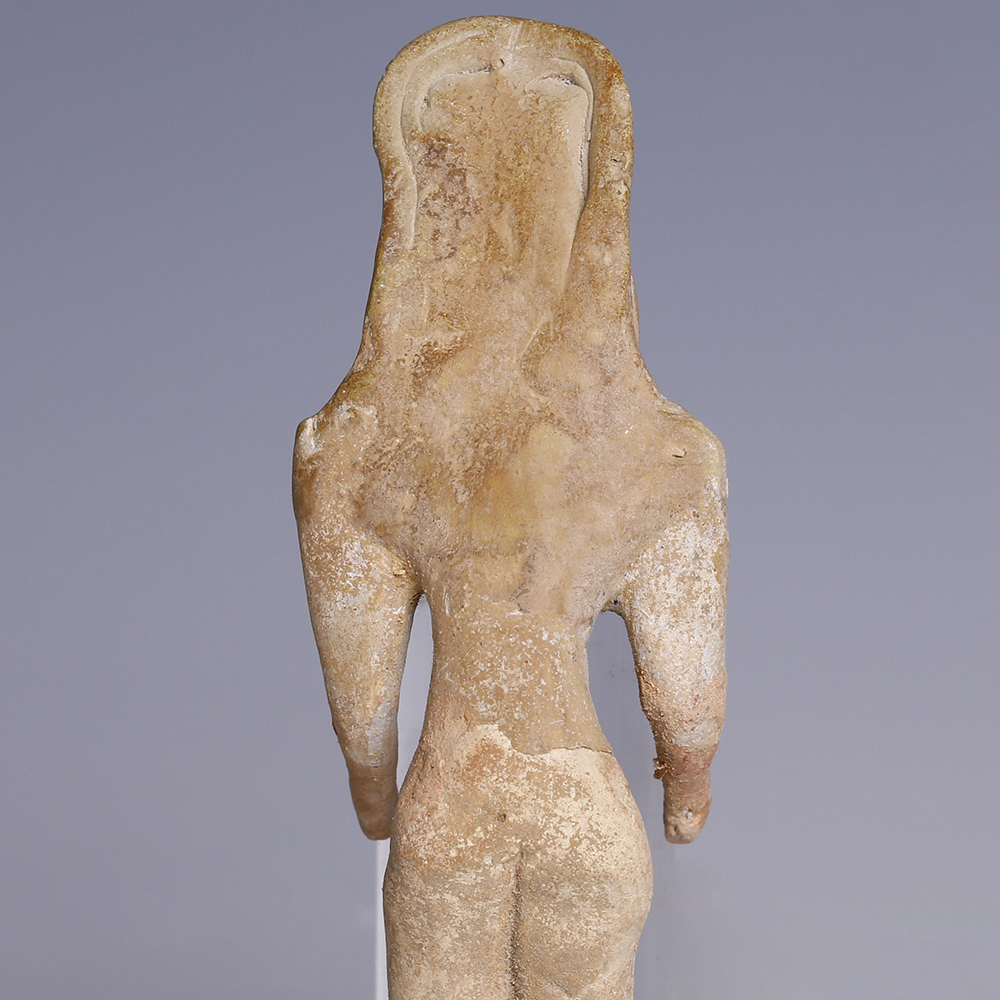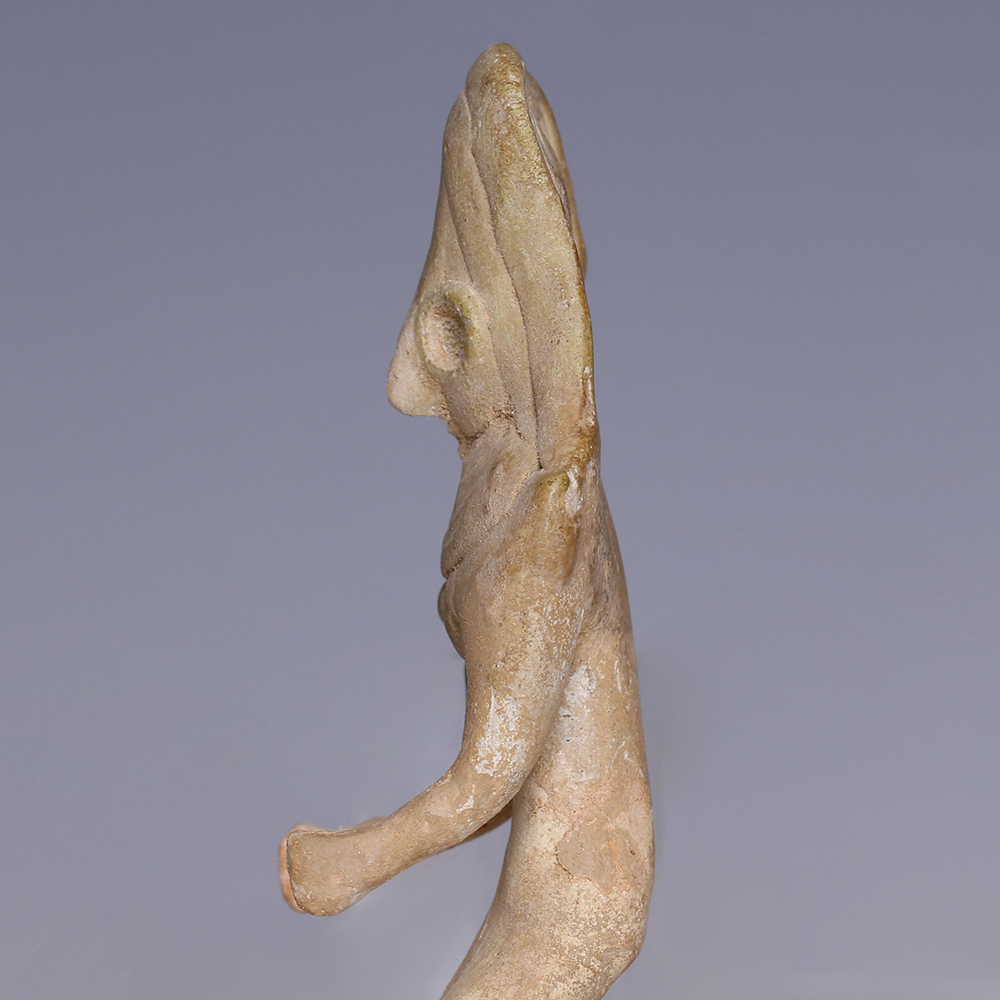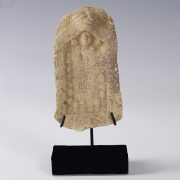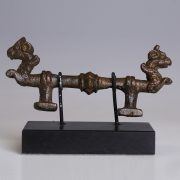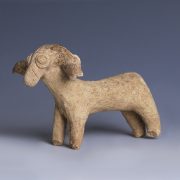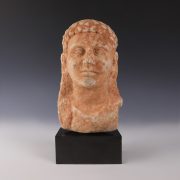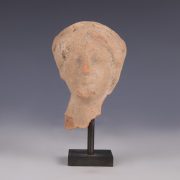The Indus Valley Civilisation extended from modern day north-east Afghanistan to Pakistan and north-west India. It was one of three early and widespread cradles of civilisation along with Ancient Egypt and Mesopotamia, dating back to the 4th millennium BC. At its peak, the Indus Valley Civilisation, which included such sites as Harappa and Mohenjo-Daro, developed new techniques in pottery, seal carving, and metallurgy. Terracotta figurines, such as this fine example, are usually classified as votive offerings, modelled in the shape of gods and goddesses.
Indus Valley Votive Statuette
$311.57
An Indus Valley pale cream pottery figure of a female figure, shown seated with her arms outstretched in the act of holding or presenting something. The figure is portrayed wearing a tight, wide collar around her neck, elaborate headpiece and with her breasts exposed. Facial features are rendered in the typical style for such pottery production, with large, sunken eyes and hooked nose. The figure can be interpreted as a goddess, with her exposed breasts suggesting a link to fertility cults.
Condition: Fine, repaired. The piece has been mounted on a custom-made stand, ideal for display.
SOLD
| Weight | 33.9 g |
|---|---|
| Dimensions | W 3.5 x H 11.4 cm |
| Culture | |
| Pottery and Porcelain | |
| Region |
